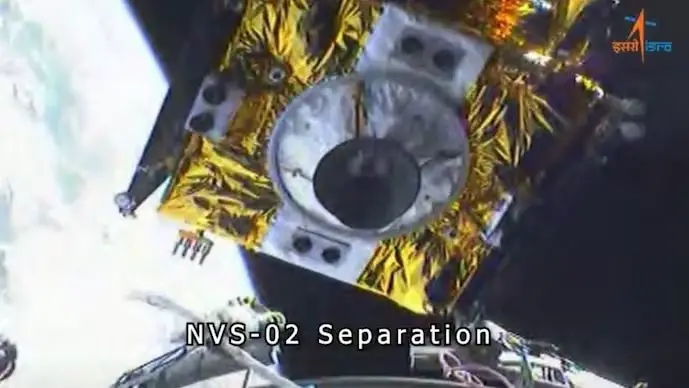The Indian Space Research Organization (ISRO) was shocked to set up the NVS-02 navigation satellite in the orbit orbit. Officials stated the reason behind this on Sunday that because the thrusters could not work properly, which led to a hindrance in orbit adjustment.
The agency said in the mission update, “The orbit could not be enhanced to install the orbit in the designated orbital slot, as it did not open the valves that allowed the oxidizer to fire the thrusters for this.” The agency said that alternative mission strategies are being worked on to use the satellite for navigation in the elliptical orbit.
What is the satellite in what position?
India’s indigenous space-based navigation system, an important component of the navigation with Indian Constitution (NAVIC), NVS-02 satellite, launched on 29 January via GSLV-MK 2 rocket, which was the 100th launch of ISRO from Sriharikota Space Center.
The satellite is now circling the earth in the elliptical geo-radical transfer chamber (GTO), which is not suitable for the navigation system. ISRO said, “The satellite system is fine and the satellite is currently in the elliptical orbit. Elliptical orbit is working on alternative mission strategies to use satellite for navigation.”
Also read: Where is India in AI race? Options like ISRO and UPI can give the world
After the GSLV rocket successfully installed the satellite in GTO, it was deployed according to its solar panel plan and the power generation remained stable. The space agency confirmed that communication with the ground station was established. Officials said that the launch was successful, all stages performed without any mistake.
NVS-02 Satellite is the second satellite of India’s next generation Navic system. NAVIC is a regional satellite navigation system, designed to provide accurate status, velocity and time -related data for users up to 1,500 km from across India and from its borders.
NVS-02 will increase the capabilities of NAVIC, which will benefit applications such as navigation, agriculture, emergency reaction, management and mobile device location services. It has an advance navigation payload operating on three frequency bands (L1, L5, and S) to ensure high accuracy.
